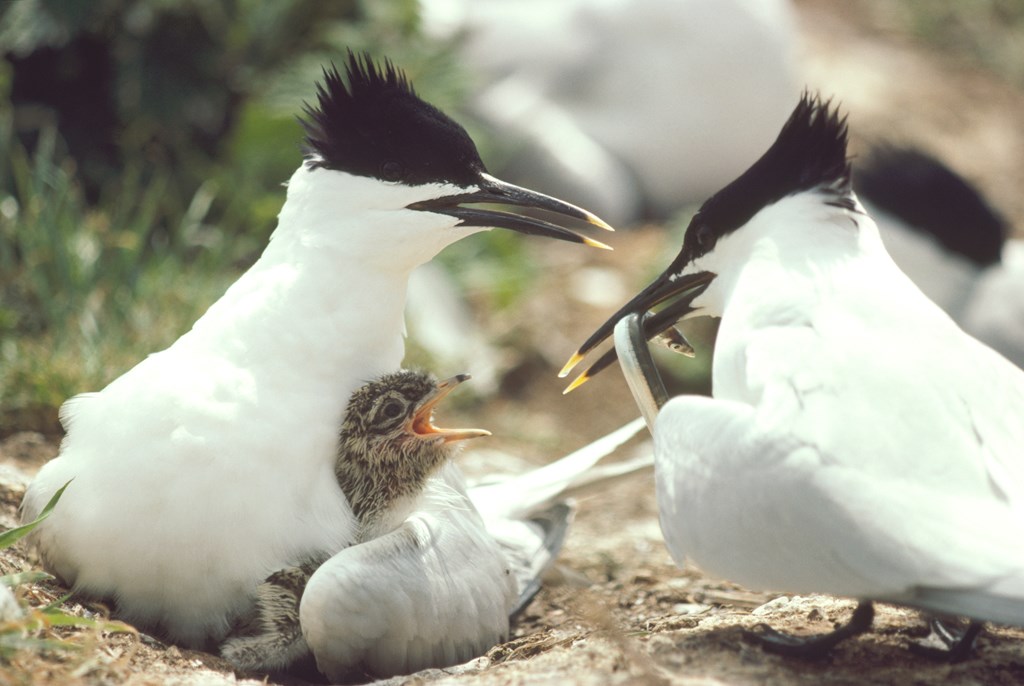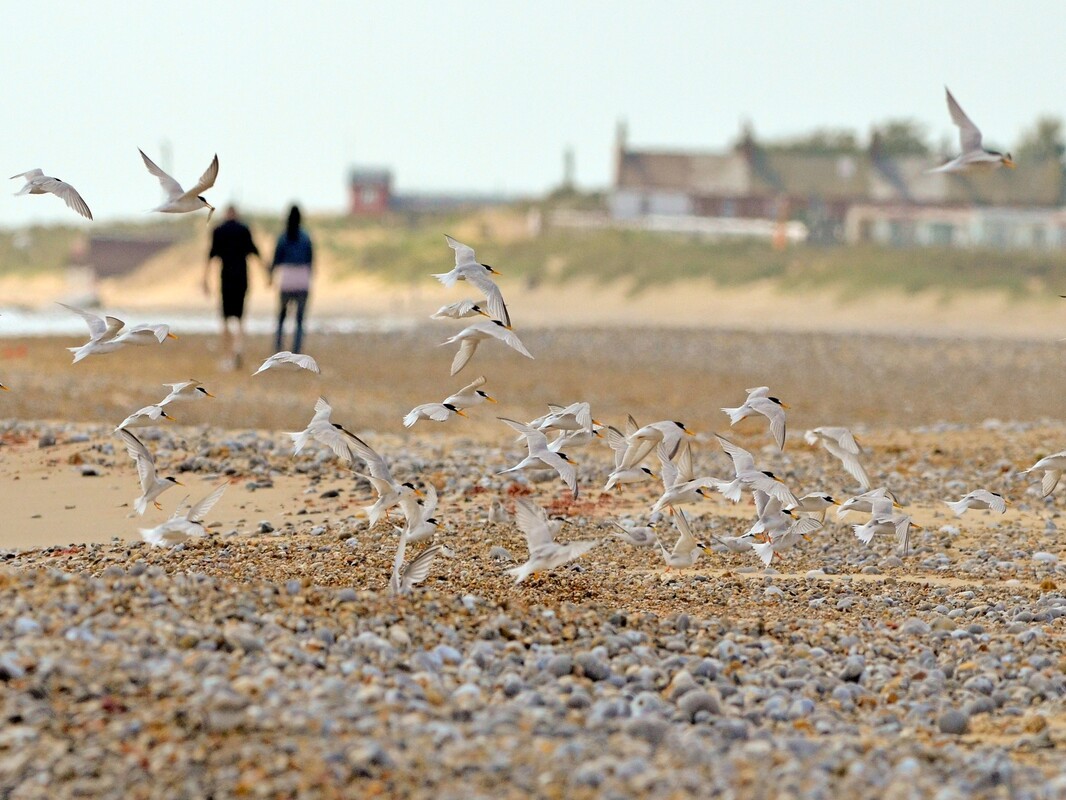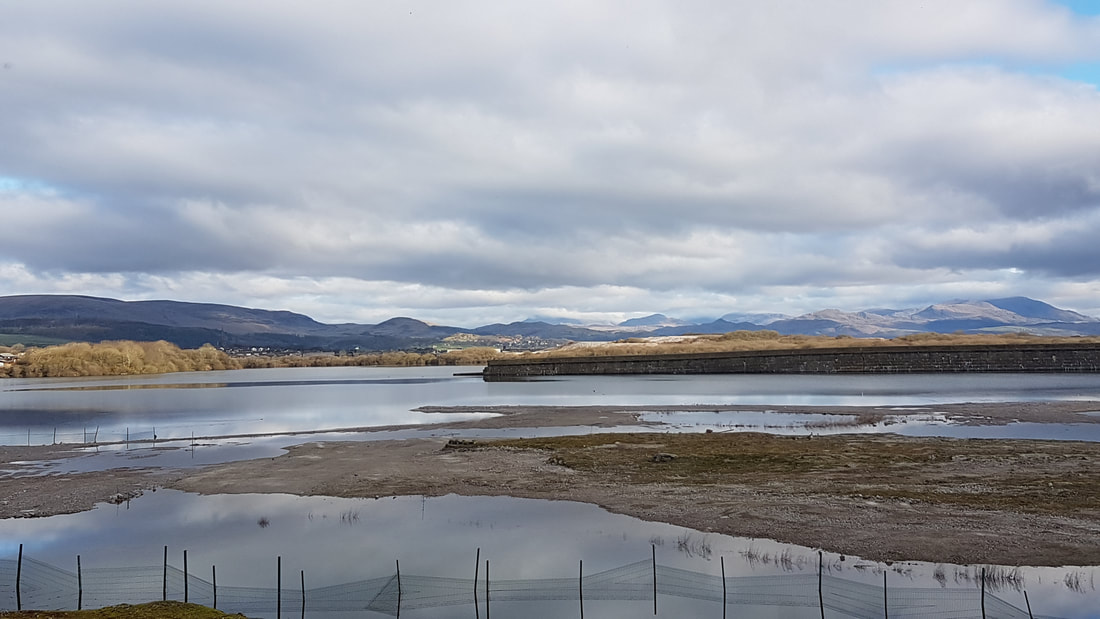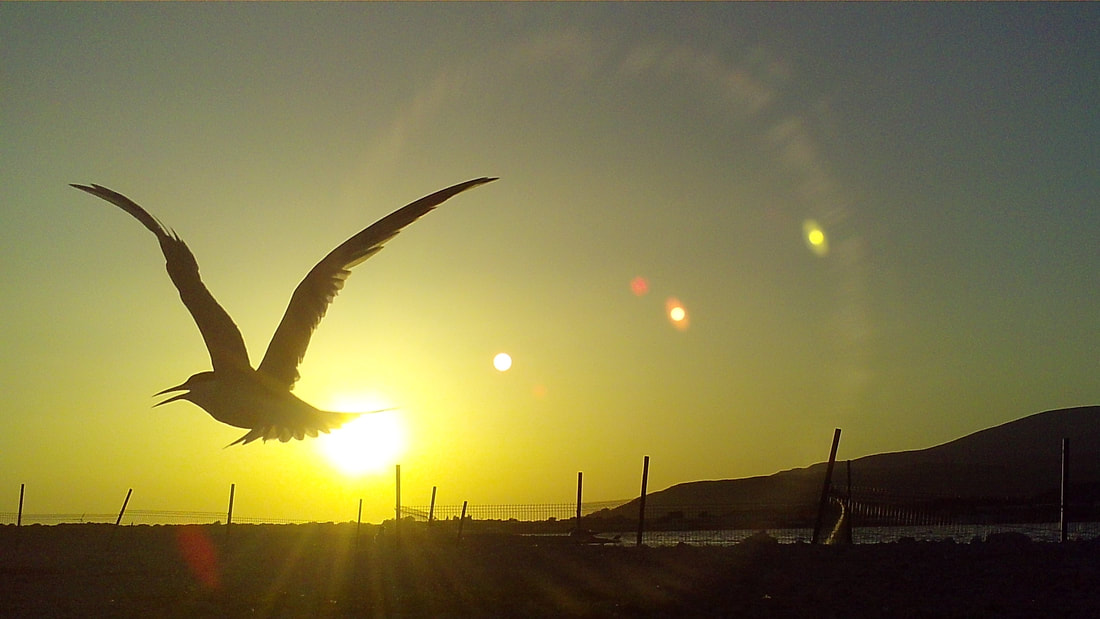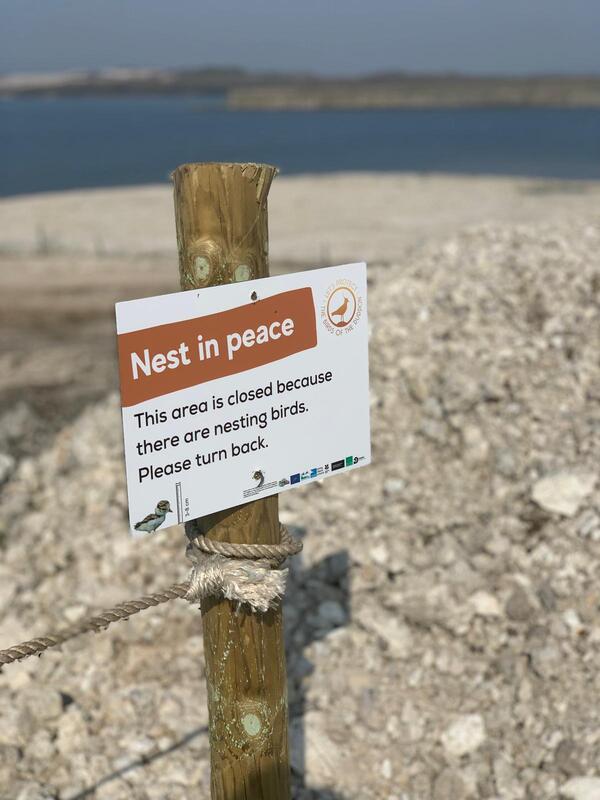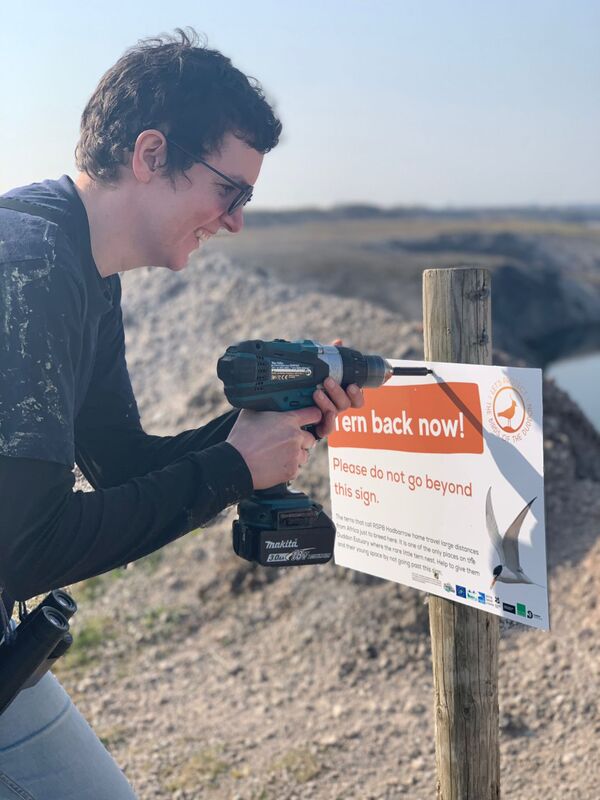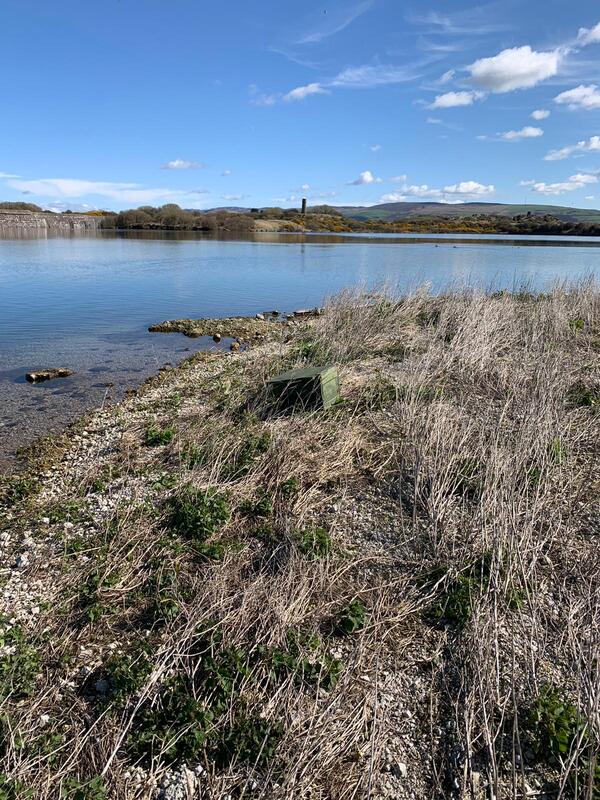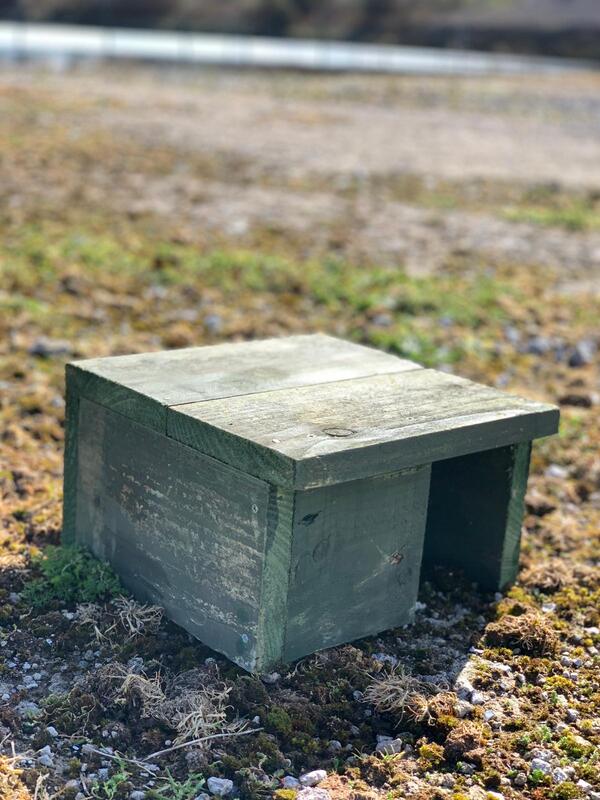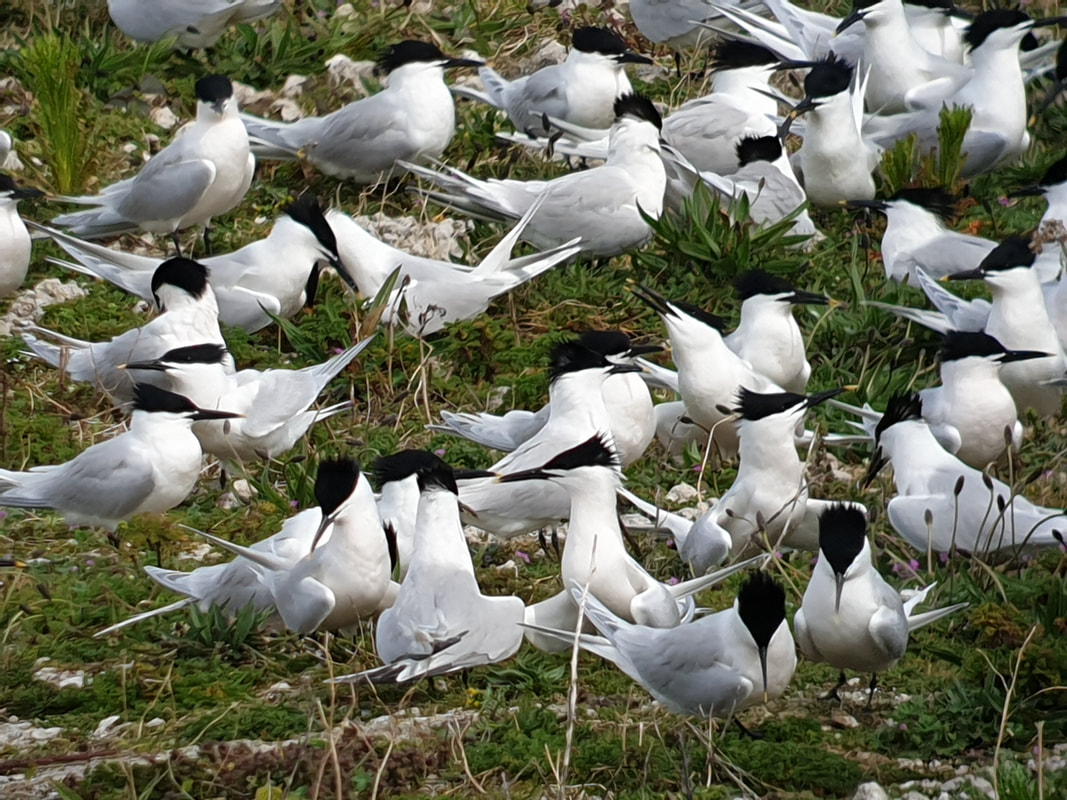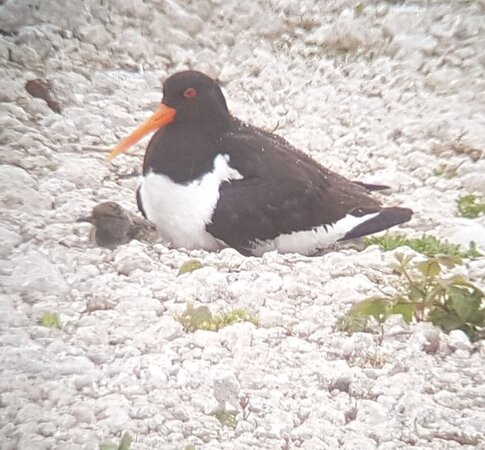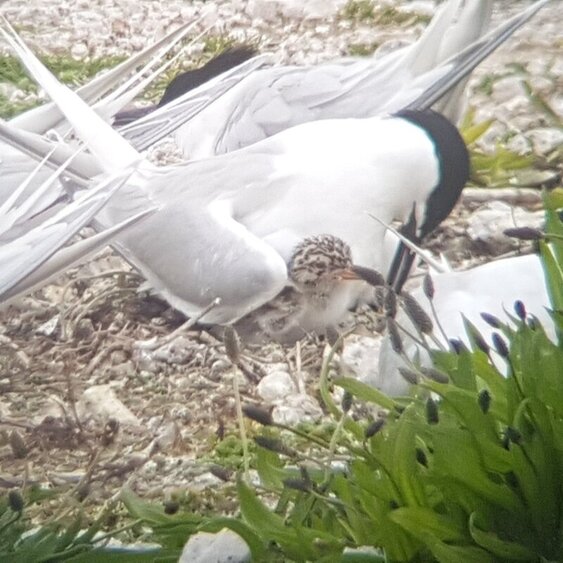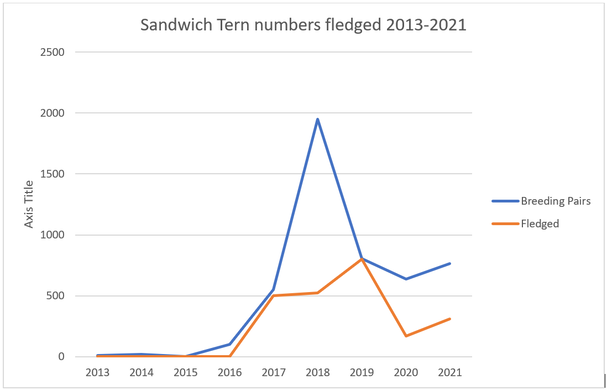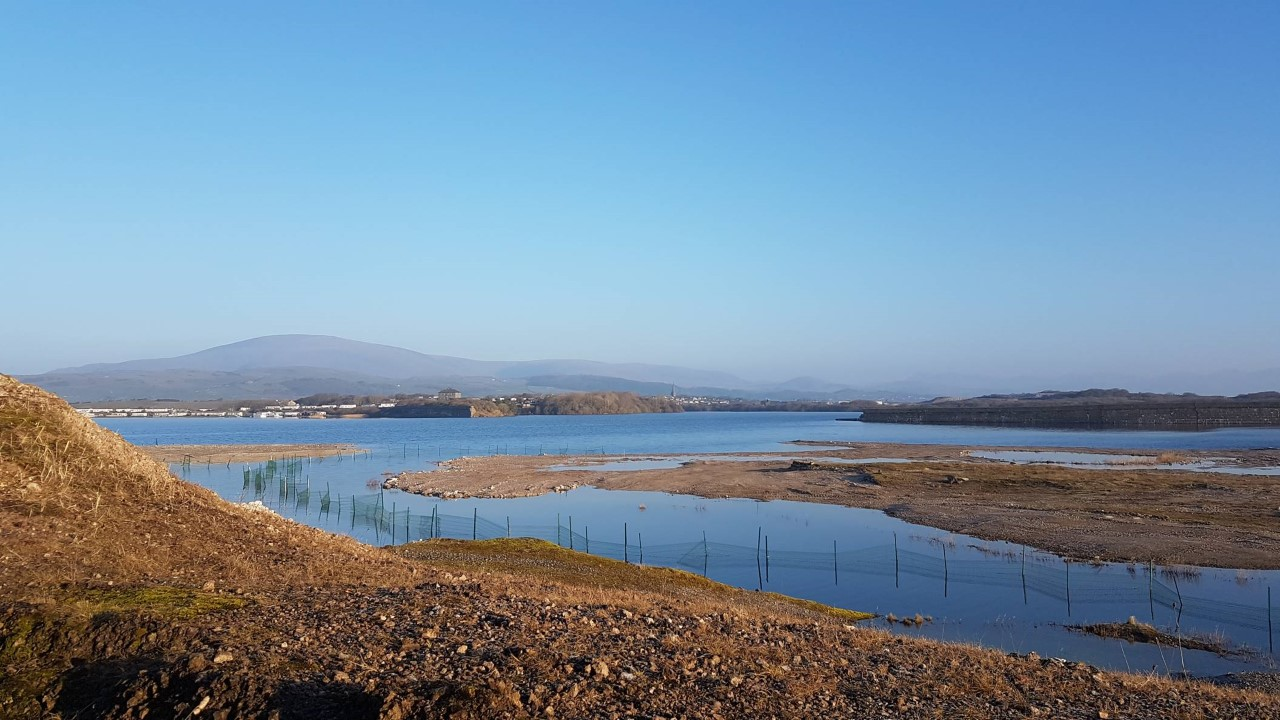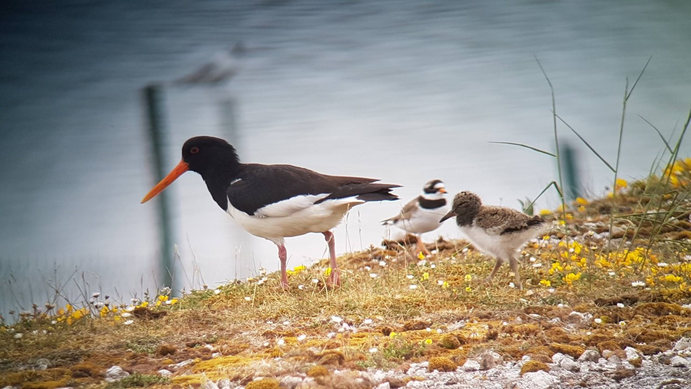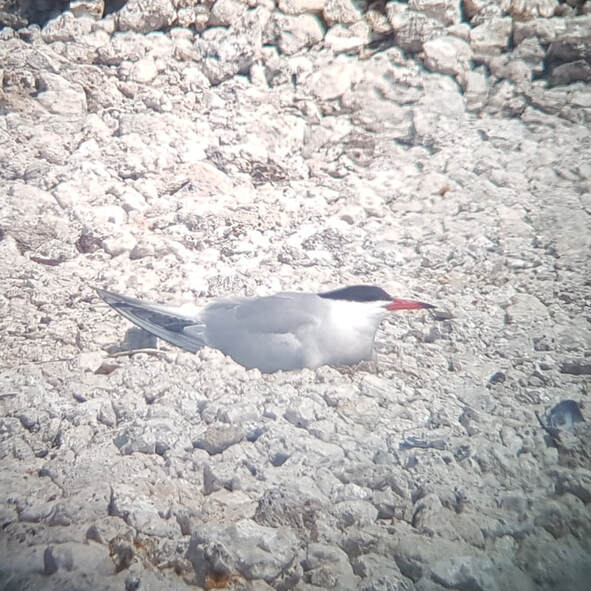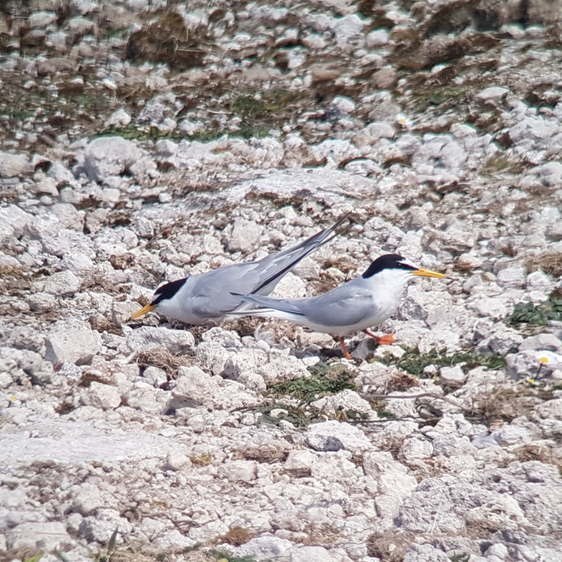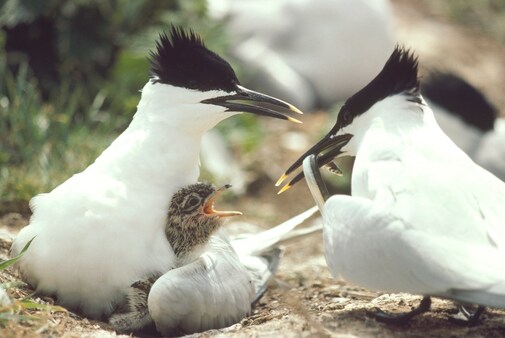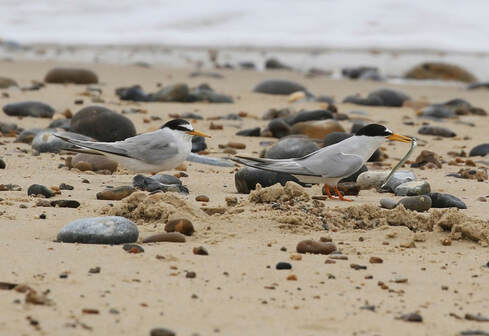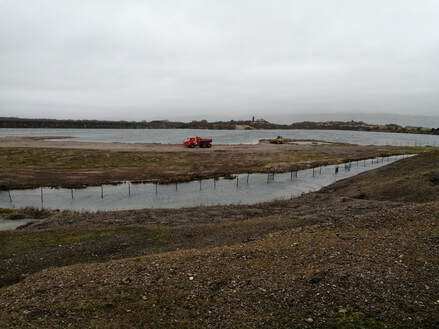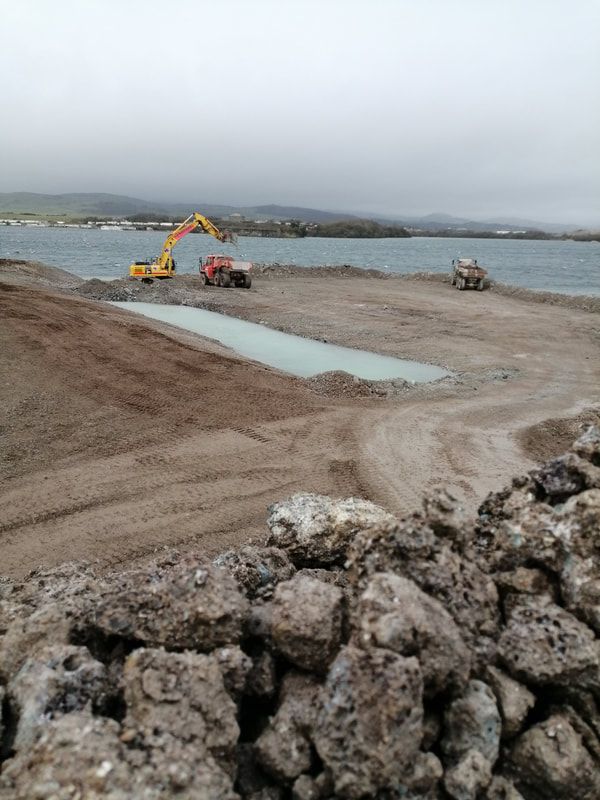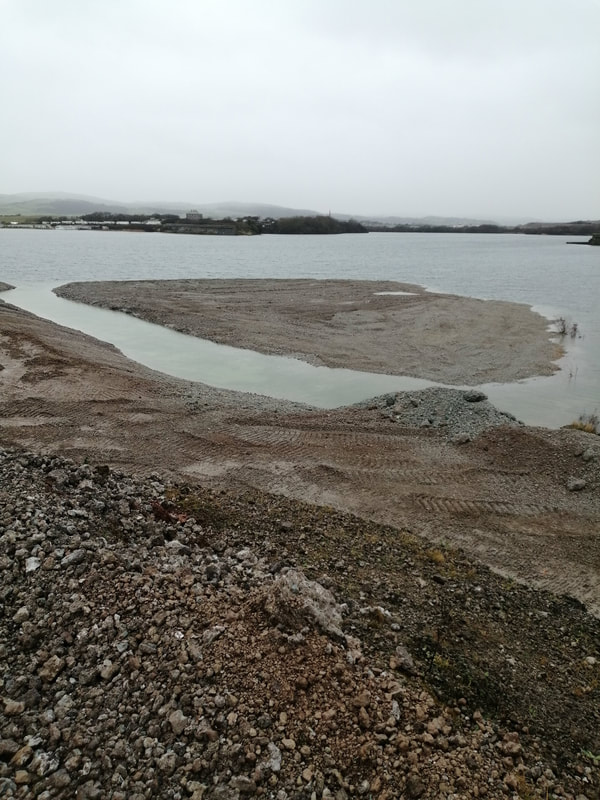|
Blog by Leigh Lock, RSPB Project Development Manager The global and national threats to seabirds are widely recognised and much focus understandably links the status of seabirds with the state of our seas which is where most seabirds spend most of their time. But what about the state of the ‘land’ where seabirds spend the breeding season – a critical phase of their lifecycle? As a land-based observer of birds on the coast for decades, the growing pressure on breeding seabird sites has been a major concern and I feel we have reached a tipping point where if we don’t act now there will be no safe nesting space left for seabirds in some areas in the future. Therefore, I was excited by the prospect of Seabird Conservation Strategies being developed within all four UK counties by government – each will set out the strategic needs of our seabird species and set out a route map for their recovery. This process in England has been led by DEFRA and NE. But I wanted to make sure that the current state of seabird colonies in England was reflected in this process and that the thoughts and concerns of those most close to the sites – the site managers, conservation officers etc responsible for these areas– were captured. So I contacted as many of those key people around the coast as possible to gather views on pressures impacting on seabird colonies. This is probably the first time such an assessment has been made. Much of this information gathered was necessarily subjective, being based on the opinions of the site managers, and others. However, expert judgement provided by the site managers most familiar with the sites, and their issues, constitutes the best available evidence on issues affecting England’s breeding seabirds. The process does present a ‘ground truthing’ to compare with other available data sources so that all the available information together can be used as ‘weight of evidence’ to identify the main issues and develop solutions to them. Working closely with colleagues within NE, we then looked to align this rather broad-brush assessment of pressures on colonies with other data sources being carried out to inform other areas of the strategy. Information was gathered on 222 natural sites (i.e., excluding urban gulls) and covering 24 seabird species – this representing the vast majority of England’s seabirds. Pressures were assigned to predefined categories including disturbance, habitat loss, predation, invasive species, disease, and control. Note that the assessments were carried out before the widespread and serious impacts of Avian Influenza (AI) were recorded in England in 2022. Overall, the most widespread was disturbance (see below), with both habitat loss and predation impacting on over 50% of the sites. The other pressures were recorded at far less sites, although their impacts at individual sites could be very significant (e.g., invasive species on islands). There are plenty of discussion points emerging from this but below I have pulled out just three. 1. The widespread impacts of disturbance Disturbance is the most widely reported pressure affecting England’s breeding seabirds impacting on 89% of the coastal sites, all sites supporting species like little tern and Sandwich tern, and 100% of English SPAs with breeding seabird features. Site managers see disturbance as THE rapidly growing issue, and human recreational disturbance at coastal sites is predicted to increase. Disturbance of nesting seabirds is caused by a range of recreational activities – beachgoers, dogwalkers and recreational fishers on land, and recreational watercraft such as jet skis, paddleboarders from the sea. Although disturbance is particularly an issue for ground-nesting birds such as terns and gulls at soft coast sites, I was also surprised how widely it was reported at cliff colonies and even offshore islands where birds vulnerable to disturbance from the sea. Disturbance at nest sites can have significant negative impacts on seabird breeding success through increased exposure of eggs and young to predation and the elements and can lead to the abandonment of nest sites and even entire colonies. What I see are overstretched, under resourced conservation organisations trying to manage coastal sites where nature conservation should be the priority, but recreational interests prevail. Many areas have wardens to ‘protect’ nesting birds and engage with the public. But without zonation policies and legislation to restrict certain activities, on-site teams of staff and volunteers face an uphill battle, and the birds using these sites face a bleak future. 2. Sea level rise and coastal erosion present an existential threat to some of England’s most important seabird colonies. Within England, most seabird sites occur on ‘soft coast’ sites – nearshore islands, salt marshes, lagoon islands and shingle banks. These habitats are under massive pressure and the reduction in size and quality of nesting habitat is the second most widespread pressure in England. Without intervention, 2,000 Ha of protected coastal habitats is predicted to be lost in England by 2060 with even greater areas being functionally lost as breeding habitat due to regular flooding. Previously, these losses were mainly from development and land claim, but the key future threats to coastal habitats are from climate change-related sea level rise, coastal erosion, and coastal squeeze. Mean sea levels in the UK have already risen by approximately 17 cm since the start of the 20th century and climate predictions show that they will continue to rise under all emissions scenarios until at least the year 2100. Increases in sea level rise are difficult to predict but are likely to be greatest in southern and eastern England where some of the largest colonies are. Rising sea levels mean that more coastal seabird breeding habitat will be lost, and the risk of intermittent flooding of nest sites is also increased. In addition to mean sea level rise, the risks of extreme sea levels and flooding are compounded by increases in storm events. Species that nest on the ground in sand and shingle habitats, such as terns and gulls, are particularly at risk, as large areas of these types of habitats can be lost rapidly with only minor increases in sea level. Many current breeding sites for terns and gulls on beaches and low-lying near-shore islands which are likely to become unsuitable or be lost entirely within the next 10 years. Little terns are particularly at risk because they tend to nest just above the high-water mark and in recent years high proportions of the UK’s little tern nests have been flooded out during spring tides and storm surges. Short term fixes are in place at many sites. Habitat management to keep sites open, recharge of shingle islands to raise their levels above highest tides but longer-term measures are required to ensure that seabirds have safe nesting sites for future decades not just the next few years. This involves factoring seabird breeding habitat into multi-stakeholder strategic management planning eg Shoreline Management Plans (SMPs), Nature Recovery Networks (NRNs), Local Nature Recovery Strategies (LNRS)) and the implementation of the government’s 25-year Environment Plan. Breeding seabirds should be considered in full as part of these overarching plans and programmes, to ensure that existing breeding sites are adequately managed, and new breeding habitat is created and maintained, and linked to funding streams like Biodiversity Net Gain. 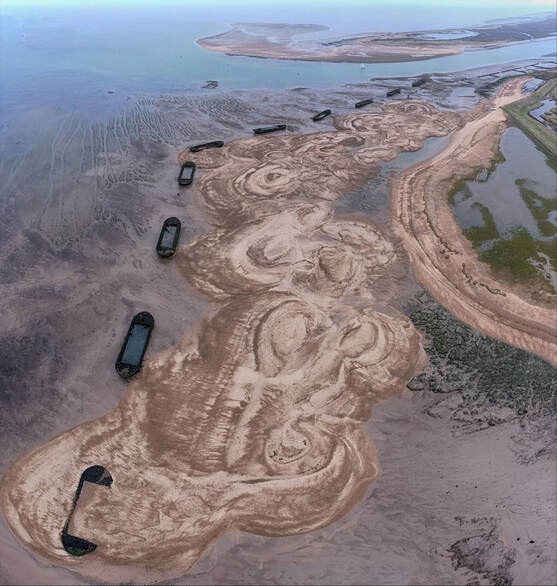 Beneficial use of dredged sediment can be used more widely to provide habitat for nesting seabirds and provide natural sea defences – here 50,000 cubic metres of sediment delivered through @ProjectLOTE working with Harwich Haven Authority, EA and the landowner supports the most important little tern colony in Essex (c) JPullen 3. Avian Influenza and the in-combination effects.
As mentioned above, the assessment was carried out last year before the impacts of AI were recorded in England this summer. Disease was not noted as a significant pressure and has not really impacted on seabirds since botulism on gulls in the past. But the impacts of AI in 2022 have been severe – impacting significantly on the largest UK and England colonies of both roseate and sandwich terns – Coquet and Scolt Head Islands respectively -with 1000s of dead breeding adults and large-scale breeding failure at these colonies. we await a full assessment of the impact of AI on seabirds in 2022 and how it might impact in the future. But think of the conditions under which AI was able to make such an impact. The ‘in combination’ effects of habitat loss, predation, disturbance have pushed seabirds to the edge – habitat loss squeezing seabirds into fewer and fewer suitable areas, which then become honey pots for predators, and even these few special sites coming under the unbearable pressure of disturbance. All our eggs in fewer and fewer baskets. And then a disease comes along which thrives in conditions where it can spread rapidly amongst individuals in closely packed colonies. To have seabird populations that can be resilient to AI and other diseases, we need more space for them to nest safely, allowing more colonies to thrive, and allowing more mobility from site to site to respond to changes in local conditions. Building resilience to disease and other pressures, requires spreading the risk – more and bigger sites, better managed. For this we need to rethink how our coast is managed. The report The full report is on the documents page of this website. Lock, L., Donato, B., Jones, R., Macleod-Nolan, C. 2022 England’s breeding seabirds: A review of the status of their breeding sites and suggested measures for their recovery. RSPB and Natural England report. The report highlights the most important sites and actions for the recovery of seabirds in England. The recommendations from this report on site management have been incorporated into a wider set of recommendations covering the full suite of seabird ecology -under four categories -breeding, feeding, surviving and knowledge. These recommendations have been made by NE to DEFRA to inform the further development of the England Seabird Conservation Strategy and the implementation of the 25 Year Plan. The Strategy should be available early in 2023. Through ProjectLOTE we will continue to advocate for these changes and work with stakeholders all-round the coast to deliver what we can to help seabirds. Final thoughts There are probably few more committed and enthusiastic workers than those managing seabird colonies and they are doing a brilliant job holding the line against growing pressures from all directions. But they need help. For all the above reasons, the England Seabird Conservation Strategy couldn’t come at a better time, and we must all hope that it brings a step change in the priority and resources allocated to management of seabird colonies in England. Over to you DEFRA. Thanks to all those who contributed information towards this assessment. Good luck to all of you with your challenges ahead.
1 Comment
By Rachelle Regan, RSPB Hodbarrow Tern Protection Assistant Another season has begun at RSPB Hodbarrow and preparations for the arrival of the Terns started in March. The lagoon island expansion works that took place over winter 2020-2021 meant an extra 130m of anti-predator fencing that needed some repairs after recent periods of strong north westerly winds. This involves donning chest high waders, requires steading footing and a good amount of perseverance! We hope the birds are grateful. It is not just the Terns that have benefited from the fencing, but since it’s installation in 2016, Eiders have begun nesting on the island, increasing from 18 pairs in 2018 to an amazing 51 pairs in 2021! Numbers are looking good again this year with the first few nests spotted on the 18th April. In addition to the anti-predator fencing, we install trail cameras on the island to monitor for predator presence. These may pick up any activity missed or unseen and inform immediate actions and future management. They also occasionally produce some stunning sunset photos! Another important aspect of the site set up is signage. Myself and the other Tern Protection Assistant, Chris, will be on site as much as possible throughout the season monitoring disturbance and talking to visitors. Signs, however, are vital to inform those we do not get a chance to speak to and clearly mark out the areas that are off limits to allow the birds to nest undisturbed. This year’s signs have been created as part of the LOTE project in partnership with Cumbria Wildlife Trust, Natural England, RSPB and National Trust to help protect ground nesting seabirds and waders along the Duddon Estuary and Morecombe Bay. As well as chick shelters that provide the Tern chicks with predator protection and shelter from the weather, something new for this year is the installation of Red-breasted Merganser nest boxes made by the RSPB Campfield Marsh volunteers. At least three pairs bred in 2020 and hopefully these nest boxes will encourage them again this year. Now the preparations are complete the monitoring begins. Nearly 800 Sandwich Terns have already arrived back from their wintering grounds in Namibia and South Africa, joined by the first Common Tern on the 12th April and Little Tern on the 13th April. This will be my third season at Hodbarrow and my third year living in West Cumbria year-round. The obvious answer to why I enjoy this role is my love of Terns! Their beauty and their energy is captivating, I can watch them for hours on end and never grow tired. In this role I get to spend most of my time outdoors and no two days are the same. The change in weather, tides and seasons mean there is always something to see, from the birds to the insects to the unique flora. You have the sea and Duddon estuary on one side and the mountains of the Lake District on the other, there’s no such thing as a bad view no matter which way you are facing! The Cumbria and Northern England RSPB team are another reason why I enjoy this role and keep coming back, for me the people you work with are just as important as the work itself, and they are excellent team of supportive and knowledgeable people. I am very much looking forward to another season, hopefully one full of sunshine and Tern chicks! Blog by Mhairi Maclauchlan, RSPB Cumbria Coast Reserves Warden Hello, I’m the Warden for the Cumbria Coast Reserves and I’ve been asked to give a summary of our long term tern numbers at Hodbarrow. Hodbarrow is a large lagoon in the south of Cumbria formed from a former iron ore mine. It’s calm waters and iron ore slag islands provide ideal habitat for nesting birds in particular seabirds such as terns, ringed plover, oystercatcher amongst many more. Previously my colleagues have written about the work being carried out at Hodbarrow over the last year thanks to EU Life on The Edge funding. In addition to what is happening presently it’s very important for to look at historic trends in the data, examine the reasons for those trends and use these to help shape our management. Using historic data as well as data collected by the dedicated wardens we have had in place over the last 5 years, we can see how numbers have changed. When looking at data we tend to look at population size and productivity. Numbers of nests only give us a small glimpse into the breeding season it can also be useful to investigate the productivity of those nests. When we say productivity, we mean the success of each individual nest to raise young to fledging age and the numbers of fledglings coming from each nest. Fledging survival to breeding age isn’t guaranteed but we still think of that nest as productive. Numbers of nests, in simple terms, show us what birds arrived to breed on the habitat we have however productivity shows us how many chicks were produced from those nests that will now be part of the population. Focusing on Hodbarrow you can see from the graph below that Sandwich terns would arrive and not progress to nesting or fledging stage and have shocking productivity. After several years of this trend in the winter of 2015/16, we installed an in-water fence to stop predators such as fox accessing the island and decimating the nesting birds. This was also the start of our employment of summer wardens who were responsible for managing disturbance and large gull predation. As you can see after these measures were implemented birds were able to settle and breed as well as successfully get chicks fledged. South Cumbria Populations It can be very tempting to focus in on your site and what is happening locally, when in reality birds don’t see a boundary or a fence on the map. A few years ago, we came to the realisation that we had to look at Hodbarrow numbers (successes and failures as well) in terms of South Cumbria, national and even international populations rather than focus on purely Hodbarrow numbers. This gave us a wider and better understanding of what was driving our population changes. There are two main tern colonies in South Cumbria – Hodbarrow and Foulney. They are geographically very close to each other as the tern flies. We work closely with the Wildlife Trust who manage Foulney, sit on working groups with them and we have also worked together throughout Life on The Edge funding. We see the birds at Hodbarrow as very much part of the South Cumbria population. Often the overall number in the population of birds in South Cumbria stay the same however they utilise both sites. One year they can all be at Hodbarrow and another year the population can then move over to Foulney. The graph below shows the population changes for little terns over 30+ years. You can see from the graph that from 1996 – 2003 little tern numbers were concentrated at Hodbarrow and similarly from 2008-2012 Foulney held most of the birds, however overall, the population number stays roughly the same. The trends in the Cumbrian population shows that even though there are years where birds aren’t present on a specific site, we still have to make sure the habitat is great and that work carries on to provide tip top potential nest site which they may utilise during the season or in subsequent years.
Interestingly, we have even seen this trend with colonies further afield. In 2018, we had the best ever year for Sandwich terns at Hodbarrow / South Cumbria however this involved birds re-locating from Cemlyn, Wales. Within days of a mass desertion at Cemlyn due to increasing otter predation a large influx of birds arrived at Hodbarrow. We can only surmise that these birds may have made the journey up the coast and the dates certainly provided evidence in favour of this. Guest Blog by Chris Goding, Hodbarrow Field Officer Following Dave Blackledge’s introduction to the recent LOTE funded habitat works at RSPB Hodbarrow, life at the reserve continues apace. I am one of two Field Officers here over the breeding season, with shared responsibility for surveying adult numbers and productivity of our key species (notably Sandwich, common, and little terns). We also monitor predation events and engage with members of the public about the RSPB’s work at the reserve, its history, and the wildlife found here. Work was finished on the new island in January this year, complemented by an extension to the eastern side of the main island. The new island has seen modest but encouraging interest from breeding birds, and is currently home to a ringed plover pair (with two chicks) and a single oystercatcher nest as well as 2 common tern nests. We are hopeful of increased use of the island in future years once the substrate matures. At the time of writing this blog, there are at least 20 common tern pairs on the new extension to the main island, making use of the increased space provided where a small island has been joined to the ‘mainland’, forming a miniature peninsula. Current trends point to a successful season all round!
The peak count of little tern adults so far this season is 87, with at least 40 pairs, more than triple the number of pairs last year! Twenty six little tern chicks were spotted during a ringing session on the 11th June, the highest count since at least 2017, so we are hopeful of an excellent year for the species here. They appear to be responding particularly well to the application of slag to the concrete surface at their favoured spot, which helps to prevent the accumulation of rainwater around the nests. Fifty common tern pairs (with a minimum of 40 chicks so far) points to a good year for this species too. Alongside this, at least 300 black headed gull chicks and 200 Sandwich tern chicks means the colony is a busy place. With time yet for these numbers to increase we are expecting a productive season at Hodbarrow this year. By Dave Blackledge, RSPB Site Manager - Cumbria Coastal Reserves RSPB Hodbarrow sits on the edge of the Duddon Estuary in south-west Cumbria. Part of the Morecambe Bay and Duddon Estuary SPA, it was the site of one of Europe’s most productive iron mines in the 19th Century. As mining operations ceased in 1968, a mixed colony of Sandwich, common and little terns began to nest on the limestone slag by the lagoon formed on the flooded workings. This colony is now of international importance and its position behind the sea wall, protecting the site from storms, high tides and future sea level rise mean it is an integral part of western Europe’s tern network. Introduction of anti-predator fencing in 2016 immediately reversed the fortunes of the colony after a few years of fox predation, with tern numbers increasing rapidly. In 2018, predator disturbance of the Sandwich tern colony at Cemlyn on Anglesey led to a large influx at Hodbarrow with 1950 pairs, around 15% of the UK population breeding here that year. The fox free breeding islands have also benefitted other shorebirds, with black-headed gulls, eider, tufted duck, ringed plover and oystercatcher all benefitting and increasing in number. With all this activity concentrated on a single 1.5ha island it became apparent that nesting space was becoming an issue. Little terns in particular, arriving and settling later than many of the other species were being squeezed to the edges of the island, picking sub-optimal nesting sites wherever they were able to find their preferred semi-isolated spot. Life On The Edge is addressing this problem by creating further protected breeding habitat at Hodbarrow. Around 12500 tonnes of limestone slag from the adjacent slag bank will be dug and transported to increase the size of the current breeding island from 1.5 ha to 2 ha, alongside the creation of a second 0.25ha island. A further 130m of fencing to protect the new island will also mean that breaching of defences to one island will not give foxes access to the entire breeding area, giving a further level of protection. Other works include scraping of vegetation and scrub from an artificial flood bank left over from the mining operations. The aim is to provide further nesting opportunities for the SPA designated lesser black-backed gulls along with herring gulls and great black-backed gulls.
The main habitat works on site have progressed well this winter (while complying with the covid-19 guidance) and we now eagerly await the 2021 breeding season to see how the birds respond to the improved and new islands. |
Archives
April 2024
Categories
All
Photo credits: Oystercatcher by Katie Nethercoat (rspb-images.com)
LOTE Logo credits: Saskia Wischnewski |

